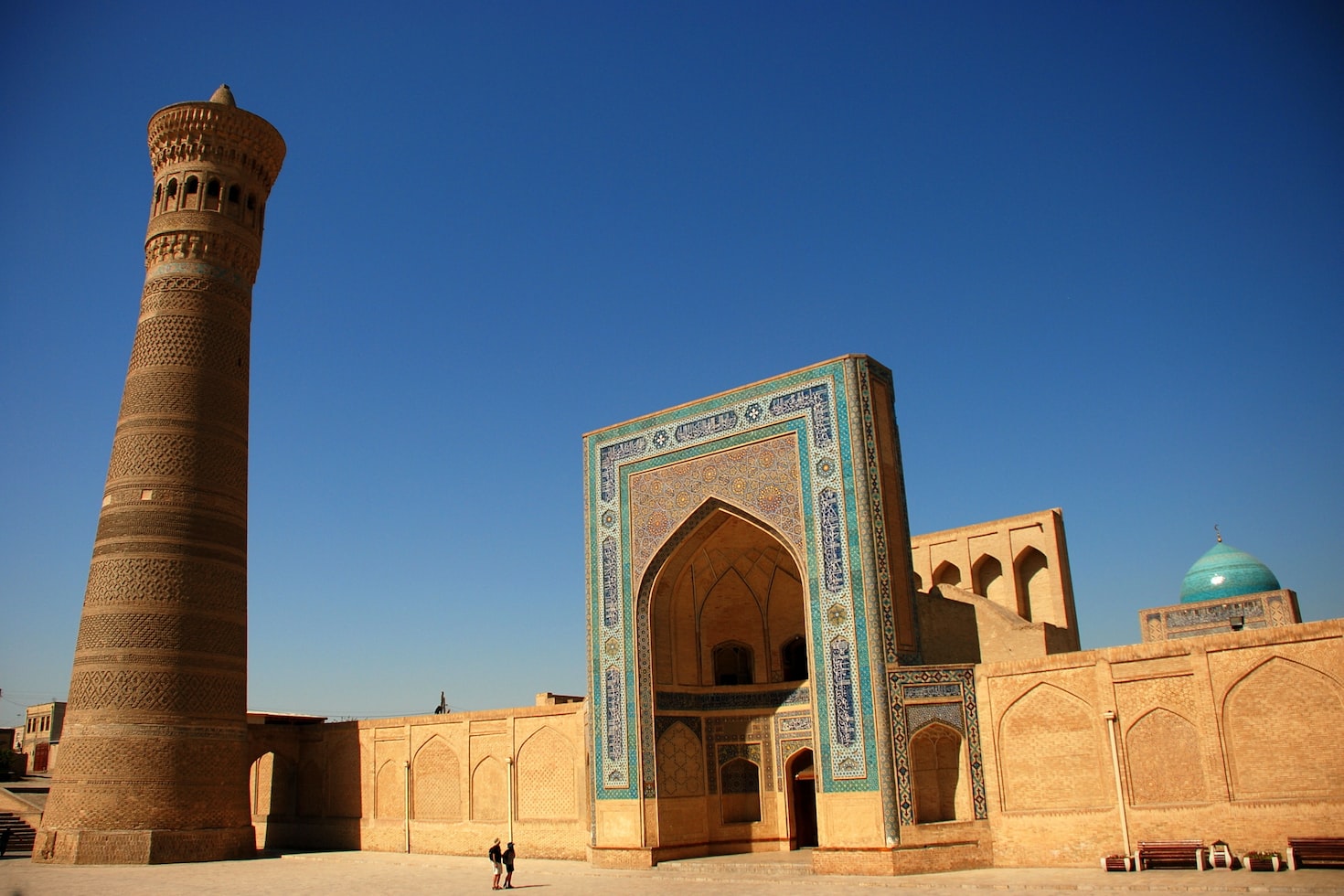
Best Tourist Sim Cards in Zimbabwe in 2024
Choosing a sim card is hard. We've analysed the best tourist sim cards in Zimbabwe across pricing, coverage and data. Find out the best pick!


If you’re planning a visit to Zimbabwe, having a sim card is essential for convenient navigation and staying connected. Access to the internet while traveling enables you to easily find the best dining options, get directions to your accommodation, book taxis, and share photos with your loved ones on the go.
While roaming is a possibility, it can quickly accumulate costly fees when traveling internationally. Therefore, we highly recommend either opting for an eSIM or purchasing a local sim card to benefit from local phone rates.
Thankfully, obtaining either an eSIM or a local sim card in Zimbabwe is incredibly straightforward. To assist you in making an informed decision, this comprehensive guide provides all the updated information on sim card pricing in Zimbabwe and suggests the optimal sim card option for your needs.
The best sim card in Zimbabwe is the Econet Wireless prepaid sim card.
Econet Zimbabwe is the largest mobile network operator in Zimbabwe and has the best coverage and fastest internet speeds across the country. NetOne also has fairly extensive coverage but Econet is the better pick.
A Tourist Sim Card in Zimbabwe costs 9,682 ZWL in May 2024, however, the exact price will often depend on the store you visit and the plan you choose.
Alternatively, an eSim in Zimbabwe will cost $9.50 USD. This, again, depends on how much data you require and which eSim provider you choose.
I generally recommend this Airalo plan for most tourists visiting Zimbabwe which includes 1GB of data which is valid for 7 days and costs $9.50 USD.
In Zimbabwe, two main SIM card providers dominate the telecommunications industry – Econet Wireless and NetOne Cellular.
Econet Wireless, established in 1998, is the largest mobile network operator in the country. It offers a wide range of services, including voice calls, SMS, mobile banking, and internet connectivity. Econet has built a solid reputation for its reliable network coverage and innovative solutions.
NetOne Cellular, another popular choice among Zimbabweans, is a state-owned mobile operator established in 1996. They offer competitive voice and data services, alongside value-added services like mobile money transfers.
Both providers have contributed significantly to the connectivity in Zimbabwe, improving communication and access to information. Their continued investment in network infrastructure and technology advancements have played a key role in bridging the digital divide in the country.
Econet Wireless is a leading telecommunications company in Zimbabwe, offering various services including affordable tourist sim cards. Their sim cards provide convenient and reliable connectivity for tourists visiting Zimbabwe. With wide coverage across the country, tourists can stay connected with their loved ones and access the internet while exploring Zimbabwe’s stunning tourist attractions. Econet Wireless ensures seamless communication and data services, ensuring an enjoyable experience for tourists during their stay.
The price of a Econet Wireless tourist sim card in Zimbabwe is 9,682 ZWL.
The plan offered by Econet Wireless stores includes 1.4GB data valid for 30 days.
NetOne Cellular is a leading telecom provider in Zimbabwe, offering convenient tourist sim cards for visitors. These sim cards provide seamless connectivity across the country, ensuring tourists stay connected during their stay. With affordable data and voice plans, tourists can easily browse the internet, make calls, and stay connected with loved ones. NetOne Cellular’s tourist sim cards are easy to purchase, activate, and offer reliable service throughout Zimbabwe.
The price of a NetOne Cellular tourist sim card in Zimbabwe is $5 USD.
The plan offered by NetOne Cellular stores offers 5GB data valid for 7 days.
Zimbabwe offers tourists a range of sim card options for uninterrupted communication during their travels. Local service providers, like Econet Wireless and NetOne, offer affordable and reliable sim cards with data and call packages. These sim cards provide seamless connectivity, enabling tourists to stay connected with their loved ones, access important information, and enjoy various mobile services. With competitive rates and widespread coverage, tourists can explore Zimbabwe without worrying about communication issues.
The price of a tourist sim card in Zimbabwe is .
The plan offered by stores includes valid for .
Identify mobile providers: Econet Wireless, NetOne Cellular and are your best options in Zimbabwe.
Find your nearest store: Locate a store or retailer by searching on Google Maps for your nearest store or asking at your hotel reception. I’ve never had issues finding a store as they can usually be found in major cities, shopping centers, or tourist areas. If possible, I always recommend to to avoid airports and head in to an official store in the city.
Bring the necessary documents: It is always a good idea to carry your passport or identification documents for sim card registration purposes. We’ve found most providers will need to confirm your identity to provide a sim card and it can be a major hassle to head to a store only to have to come back again later with your passport.
Choose your plan: Either request the plan you are after or consult with the staff in the store to select the right plan for you. My recommendations at the beginning of this guide are a good starting point, but the staff will usually be able to suggest the best option.
Pay and activate your card: Pay for the SIM card and plan, and the staff will activate it for you.
Test: It’s always a good idea to check that you can access the internet before you leave the store. I always search for something on Google then refresh my Instagram feed to check it’s working fine.
Buying a prepaid sim card for Zimbabwe at the airport is usually considered the most convenient option for travellers arriving by plane.
However, airport stores selling sim cards are almost guaranteed to charge inflated prices, so if you are a cost-conscious traveller then you should definitely buy your sim card from a store in the city center.
In addition to this, we would argue that buying physical sim cards at all aren’t particularly convenient now that most people use esim compatible phones. If you are looking for the most convenient option, then buying an esim before you arrive or with the airport wifi is much easier and will save you having to queue up or communicate with staff.
If you must purchase a sim card at the airport in Zimbabwe then you will be in luck. All major international airports in Zimbabwe have stores selling sim cards. Despite the prices being higher than normal, the staff are knowledgable and will be able to get you set up with the correct sim card relatively quickly.
If you want to avoid the inflated sim card prices you’ll find at the airport and your phone isn’t esim compatible, then you’re going to need to head in to a store to buy your sim card.
I recommend visiting one of the official retail stores of the mobile internet operators such as Econet Wireless, NetOne Cellular and . Your best option is to enter their names into Google Maps and find the branch closest to your hotel or accommodation. Typically the staff in the official stores in Zimbabwe are knowledgable and helpful which means you can ensure you’ll walk away with a functioning sim card.
Despite this, it’s always a good idea to check your internet is working before you leave the store by loading a Google search results page and your preferred social media app. You should also ensure you always bring your passport with you when purchasing a sim card in case they need to register it.
If you like to be prepared and would prefer to arrive in Zimbabwe with your sim card all sorted and your phone ready to connect to the internet immediately then you should look into purchasing a sim card online.
The first option is to buy your sim card in advance via SimOptions, which is a company that will prepare and ship a sim card directly to your door. It’s a reliable and effective service, but with the invention of eSims it’s becoming obsolete.
The better option is to purchase an eSim online. We’ve written more on that below!
An eSim is a digital version of a traditional sim card and is most likely the future of connectivity for mobile devices. The convenience of no longer visiting a store, handing over your passport and purchasing a physical sim card is quickly making physical sim cards obsolete in favour of eSims.
We recommend Airalo’s eSim when travelling to Zimbabwe. The Airalo Zimbabwe eSim offers fast internet speeds, wide coverage and extremely competitive prices making it a far more compelling option than purchasing a physical sim card from any of the local sim card providers.
In order to get set up with an Airalo eSim, all you need to do is visit Airalo here and purchase the eSim online (the $9.50 USD plan is suitable for most travellers). Once you’ve purchased the sim card Airalo will email you instructions and a QR code. Following these instructions should take just a couple of minutes, then you’ll have a sim card in Zimbabwe without having to venture outside.
Our preferred eSim provider in Zimbabwe is Airalo. We used them, alongside a local sim card on another device, for our most recent trip to Zimbabwe and found the service to be equal to the local sim card but without the hassle of acquiring a sim card in a store.
Airalo’s Zimbabwe eSim uses the Telecel network to provide data and connect users to the internet. You can expect very good coverage and reliability with the Telecel networknetwork as they are amongst the best mobile internet operators in Zimbabwe.
Here are the plans and prices for Airalo’s Zimbabwe eSim:
1GB data valid for 7 days – Price: $9.50 USD
For most travellers we recommend the 1GB data plan for $9.50 USD which is valid for 7 days. Some travellers may prefer a larger plan, whilst travellers visiting for just a couple of days may be fine with a smaller plan.

An alternative eSim provider we can recommend is Holafly.
Holafly’s eSim is a suitable option for travellers who require large amounts of data, such as digital nomads and people who work online while they travel. All of Holafly’s Zimbabwe eSims offer unlimited data.
Holafly’s Zimbabwe eSim uses the network to provide data and connect users to the internet. This network will provide reliable speeds and coverage while in Zimbabwe
Here are the plans and prices for Holafly’s Zimbabwe eSim:
Unfortunately, the Holafly esim packages for Zimbabwe are unavailable. We’ll add the prices back in here once they are available again.

An eSIM, also known as embedded SIM, is a digital SIM card that is integrated into a device, such as a smartphone, tablet, or smartwatch, eliminating the need for a physical card.
Unlike traditional SIM cards, the eSIM can be remotely activated and programmed by a mobile network operator, allowing users to switch between different networks or plans without physically inserting or removing a SIM card.
eSIM technology offers convenience and flexibility, particularly for frequent travelers or individuals who frequently switch networks or travel internationally. It eliminates the hassle of purchasing and inserting physical SIM cards, making it easier to manage multiple mobile connections on a single device.
To activate an eSIM, users can either scan a QR code provided by their mobile network operator or input the activation details manually. Once activated, the device can connect to the desired network and access voice, data, and messaging services just like with a traditional SIM card.
There are multiple benefits to using an eSIM:
– Convenience: No need to physically insert or remove a SIM card when switching networks or plans, which is especially helpful for frequent travelers.
– Dual SIM functionality: Allows for having two active mobile numbers on one device, making it easier to separate personal and work numbers or manage multiple phone lines.
– Space-saving: With eSIMs embedded in the device, there is no need for a physical SIM card slot, freeing up space for other components or allowing for smaller device designs.
– Remote provisioning: Activation and management of mobile plans can be done remotely, without the need for a physical SIM card or visiting a store, providing greater flexibility and convenience.
– Future-proofing: As eSIM technology gains more support, using an eSIM-compatible device ensures access to new services and offerings as they become available.
Overall, eSIM technology offers flexibility, convenience, and future-proofing for mobile connectivity, making it an appealing option for many users.
eSIM technology is becoming increasingly popular and is supported by a growing number of smartphones and other devices. Here are some examples of eSIM-compatible phones:
Apple iPhone series (iPhone 11, iPhone 12, iPhone 13, etc.): Apple was one of the early adopters of eSIM technology and offers support for eSIM on various iPhone models.
Google Pixel series (Pixel 3, Pixel 4, Pixel 5, etc.): Google’s Pixel smartphones also support eSIM functionality, allowing users to activate and use eSIMs.
Samsung Galaxy series (Galaxy S22, Galaxy Note 20, etc.): Many of Samsung’s flagship devices now come with eSIM support, enabling users to utilize eSIM technology.
OnePlus devices (OnePlus 7, OnePlus 8, etc.): OnePlus has included eSIM support in some of its smartphone models, offering users the flexibility of using eSIMs.
Motorola Razr (2020): The latest iteration of the iconic Motorola Razr features eSIM compatibility, enabling users to use eSIMs for cellular connectivity.
These are just a few examples, and the list of eSIM-compatible phones continues to expand as more manufacturers embrace this technology. There’s a very strong chance your phone supports eSims so if you’re unsure we recommend looking it up on our list of eSim supported phones.
Using an eSim is new for many travellers, however, the good news is it’s surprisingly easy to get set up – even for the technologically challenged!
Here’s a general guide on how to use an eSIM:
Check eSIM Compatibility: Ensure that your device supports eSIM functionality. Many newer smartphones, smartwatches, tablets, and other devices are eSIM compatible including all iPhones produced since 2018.
Obtain an eSIM: There are multiple ways to acquire an eSIM. You can purchase an eSIM online from a provider like Airalo (which we recommend) or directly from a mobile network operator. Some devices also allow you to scan a QR code provided by your carrier to download the eSIM profile.
Activate the eSIM: Your eSim provider will send you instructions to activate the sim. This will usually involve scanning a QR code, entering an activation code, or downloading the eSIM profile directly onto your device.
Set up the eSIM: Once activated, your device will guide you through the eSIM setup process. This typically involves selecting the eSIM as your preferred mobile plan, configuring settings like data roaming, and entering any necessary authentication details.
Enjoy the Connection: Once the eSIM is set up, you can use it as you would with a physical SIM card. Make calls, send messages, browse the internet, and use data services as needed. You can also switch between eSIM profiles if you have multiple eSIMs installed on your device.

Hi, I’m Mitchell. I’m a full-time traveller, explorer and travel blogger. I've travelled all around the world, using and testing countless travel sim cards along the way. I'm the founder of and writer for Travel Sim Expert where I write guides to help travellers stay connected all around the world.

Hi, I’m Mitchell. I’m a full-time traveller, explorer and travel blogger. Travel Sim Expert is a blog dedicated to helping you find the best sim card for you, no matter where you are or what your budget is.
© Travel Sim Expert – Designed by us.